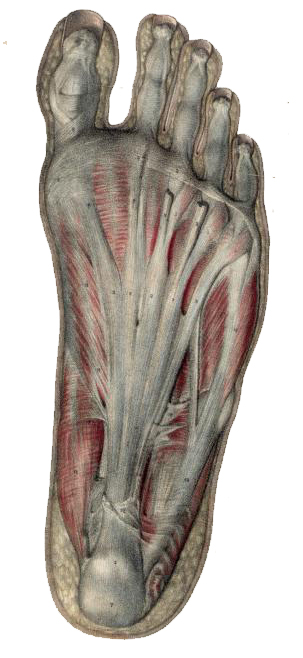Enhancing Interoception and Emotional Well-being through Manual Therapies: Exploring the Impact of Touch on Sensitization and Visceral Function

A recent review article discussed the concepts of interoception, central sensitization, emotional health and visceral manual treatment. Here we present the summary of the article by Hugo Pasin Neto, Eduardo Bicalho, Gustavo Bortolazzo published in Cureus.
In simple terms, interoception refers to our body’s ability to sense and understand its internal conditions. It involves signals that come from various parts of our body, particularly the organs. When these internal signals are not working properly, it can lead to a condition called central sensitization, which means the pain receptors in our central nervous system become more sensitive. The insula, cingulate, and prefrontal cortex are parts of our brain that form a network responsible for receiving and interpreting these internal signals, and they also play a role in our emotions. This suggests that treating issues related to the organs may affect a person’s emotional well-being by influencing the receptors found in the surrounding tissues.
Sensitization
Sensitization refers to a condition where the neurons in our central nervous system become more responsive to pain signals, even at lower levels of stimulation. There are two types of sensitization: central and peripheral. Central sensitization involves processes in the central nervous system and occurs when prolonged exposure to harmful stimuli leads to increased excitability of pain-related neurons. Peripheral sensitization, on the other hand, happens at the local tissue level and involves changes in the activity of sensory receptors, causing the perception of pain even with non-painful stimuli or an exaggerated response to painful stimuli. Sensitization can be modulated and is reversible, typically resolving when tissue repair occurs.
The viscera (internal organs) have a complex system of nerve innervation, with a significant portion of afferent inputs originating from them. Visceral afferents are capable of sensing mechanical, chemical, and thermal stimuli and are prone to sensitization. Pain originating from the organs can result from various factors such as stretching, inflammation, or ischemia. The roles of different types of receptors in the phenomenon of sensitization, both in the periphery and the central nervous system, have been studied.
There has been speculation about the clinical implications of sensitization and its impact on our perception of internal bodily sensations (interoception). Some researchers propose a theoretical framework called the “interoceptive paradigm,” which explores the relationship between sensitization and interoception. They suggest that manual therapies like Osteopathy may affect sensitization through interoceptive pathways, potentially influencing clinical outcomes.
In summary, sensitization refers to an increased responsiveness of pain-related neurons in the central nervous system, and it can occur both centrally and peripherally. The viscera have a complex nerve innervation and play a role in sensitization. The relationship between sensitization and our ability to sense internal bodily sensations (interoception) is an area of ongoing research, and manual therapies may have an impact on sensitization through interoceptive pathways.
Interoception
Interoception refers to the body’s ability to sense and interpret internal signals. In the past, this concept was known as coesthesia and was associated with the unconscious awareness of the body’s functioning, which only became conscious when there was disease or dysfunction. However, the term interoception has been revised and is now used to describe this process.
There are different definitions of interoception, ranging from sensory input from internal receptors to a multidimensional construction involving the evaluation and reaction to bodily sensations. It is considered an evolution in anthropoid primates and involves a direct pathway from the spinal cord to the thalamus and cortex.
The insular cortex plays a crucial role in interoception, receiving input from afferent fibers related to various aspects of bodily function, such as mechanical, thermal, chemical, metabolic, and hormonal status. These fibers transmit information about the physiological condition of tissues throughout the body, including the viscera. They end in the spinal cord’s superficial layer and project to the brainstem, particularly the nucleus of the solitary tract, which also receives visceral and gustatory information from nerves like the vagus.
The brainstem, including the parabrachial nucleus and periaqueductal gray substance, is involved in integrating interoceptive information and influencing emotional and autonomic responses. The thalamus contains nuclei that receive projections from the brainstem and send signals to the insular cortex and other cortical areas involved in emotional processing.
The interconnected network of brain regions involved in interoception is known as the central autonomic network. It includes the insula, cingulate cortex, hypothalamus, prefrontal cortex, and other structures. The insula, in particular, is responsible for receiving sensory input, generating awareness of bodily sensations, and coordinating the motor responses associated with those sensations.
Overall, interoception plays a vital role in integrating the perception of the body with mental processes, allowing for affective integration and the maintenance of homeostasis.
Interoception plays a crucial role in regulating emotional expression and maintaining mental well-being. It influences the functioning of the central nervous system and is interconnected with cognitive and emotional processes.
The body’s condition, known as homeostatic processing, forms the basis for emotional awareness and the construction of the self. Dysfunctional interoception can contribute to disorders like anxiety and depression, often in conjunction with dysfunctional beliefs. Our brain uses concepts to interpret internal sensations and generate emotional responses.
The insular and cingulate cortices are key regions involved in affective bodily feelings and play a role in the control of emotional expression. Activation of the anterior insular cortex is associated with subjective feelings and is considered the generator of human consciousness.
Studies have shown the integration and interaction of various brain regions involved in emotion, with no specific region dedicated exclusively to a single emotion. Emotions arise from the firing of neurons in a complex and integrated network.
Overall, a balanced interoception is essential for the construction of balanced emotional responses and mental well-being. It influences neural networks involved in emotion, cognition, attention, decision making, and behavioral functions.
Interoception and manual therapy
Manual treatments can have positive effects on interoception and emotional behavior. Dysfunctions in the viscera can lead to altered interoceptive signals and sensitization of the nervous system. Manual therapies targeting visceral mobility and viscoelasticity can improve interoceptive afferences and potentially reduce peripheral and central sensitization states.
Visceral stimulation during manual treatment can influence autonomic activity and brain areas involved in emotions. Studies have shown improvements in symptoms and psychological well-being in individuals with conditions like irritable bowel syndrome and intestinal constipation after receiving manual therapy focused on the spine and abdominal viscera.
Improvements in movement and visceral function through manual treatment can positively impact spinal cord reflexes and decrease dysfunctional interoceptive signals. Therapeutic touch during manual therapy activates the insular cortex and promotes interoceptive integration.
Different types of touch, including soft and static touch, can access the interoceptive pathway and improve interoceptive accuracy. Pain inhibition may also occur through touch, leading to modifications in sensitization states and alleviating mechanical hypersensitivity.
It’s important to note that touch intensity and cognitive influences can affect the interoceptive experience and emotional responses during manual treatment.

